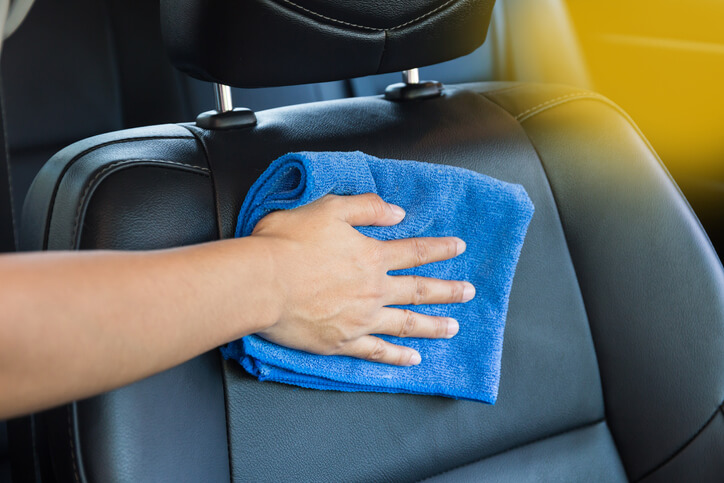Best Practices For Cleaning Leather Interiors in Auto Detailing Training
Whether they are present as the cozy wraparound fabric on your seats and steering wheel or the soft caress on your handbrake, leather interiors add a plush and exquisite touch to cars. But beyond the classy looks and comfy feel it gives off, leather interiors can be a little more sensitive and vulnerable than other interior fabrics.
They do not do well with spills, scratches, or exposure to sunlight, heat, and harsh cleaning chemicals. This is why care must be taken while handling this material.
This blog discusses some of the best practices for cleaning car leather interiors as an auto detailing professional. Read on to learn more.
1. Vacuum properly After Automotive School
A car’s leather interior will pick up dirt from food, clothing, or household items, so vacuuming the interior is standard practice, as you’ll find out in auto detailing training. When using a vacuum cleaner (portable vacuum, more preferably) to eject dirt, food bits, debris, and all traces of dirt from the car’s interior, do not rush to move on to the next leather part. Also, target the crevices along the seats and the seams as they are most prone to harbouring dirt particles away from sight.
Our Automotive Detailing program offers a practical learning style that is mainly shop-based. You’ll spend 85% of the course getting hands-on experience in the store, giving you the assurance you need to perform in a genuine shop setting.
2. Apply Leather Cleaner
After vacuuming the car’s interior, apply moderate amounts of leather cleaner. It is imperative to check the leather cleaner’s product information to confirm that it is free of harsh chemicals and solvents. Also, ensure you follow any provided instructions for diluting the product.

Start by applying the leather cleaner in short bursts of spraying motions around the interior while focussing on the more visibly stained parts. You can apply the leather cleaner on a microfibre towel, sponge, or any other suitable cleaning material and then press it gently and in small segments against the interior’s surface.
3. Rid the Leather Surface of Excess Moisture
After applying the cleaner, the next step is to remove any excess moisture from the interior’s surface. To do this, firmly press a clean towel against the interior to absorb any residual moisture. You can leave the leather to air dry by itself while shutting off any entry point for heat.
Our campus produces auto detailing professionals who are widely sought after because we teach our students to transform inexpensive automobiles and trucks into much more expensive refurbished vehicles. While removing excess moisture is a crucial step in the process, our students are well-equipped to understand how to use any cleaner delicately.
4. Apply Conditioner
With the leather now well-dried, apply the conditioner to its surface. Using a clean, soft towel/cloth or any other applicator material, apply a moderate amount of the conditioner to the surface in gentle, circling motions.

It is always good to check the manufacturer’s information to determine how long the conditioner will take to dry off. Once this time elapses, turn the towel to a clean side (or get a new one) and rub it against the leather surface to give it a fine, polished, and shiny look. You can also use a soft-bristle brush to achieve this task. Not only will this action help to give your leather a glossy finish, but it’ll also help to further apply the conditioner’s hydration and emollient (softening) agent to the leather surface.
Applying the conditioner with UV light-resistant ingredients will protect the leather against sunlight exposure-causing cracks and wear-offs. This material protection subject is vital to some of our auto detailing courses.
5. Carry Out Regular Maintenance
After automotive school, advise your future clients to have their car’s interior cleaned regularly to maintain it in good condition. At home, they’ll want to vacuum the interior and clean it with towels as thoroughly as possible, as well as clean up spills as soon as they occur and remove stains immediately. Surfaces should also be cleaned with a conditioner regularly, usually every other month.
By joining our program, you will learn the fundamentals of preparing a car for the showroom floor and practical maintenance techniques for used cars’ exteriors and interiors. We also ensure you obtain training on various surfaces and materials, an important asset that can increase your work options.
Are you interested in auto detailing training?
Contact ATC Montreal to learn how you can get started.


